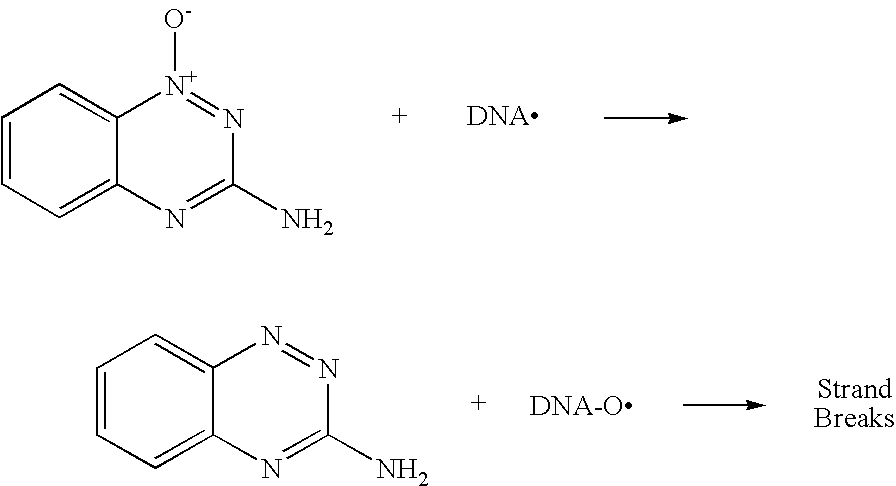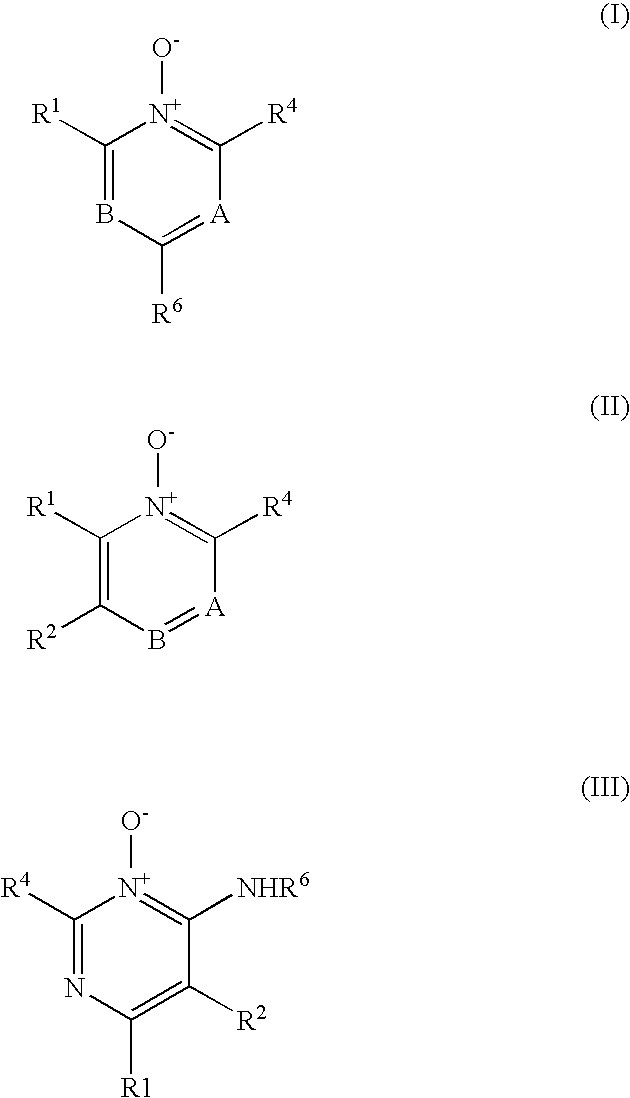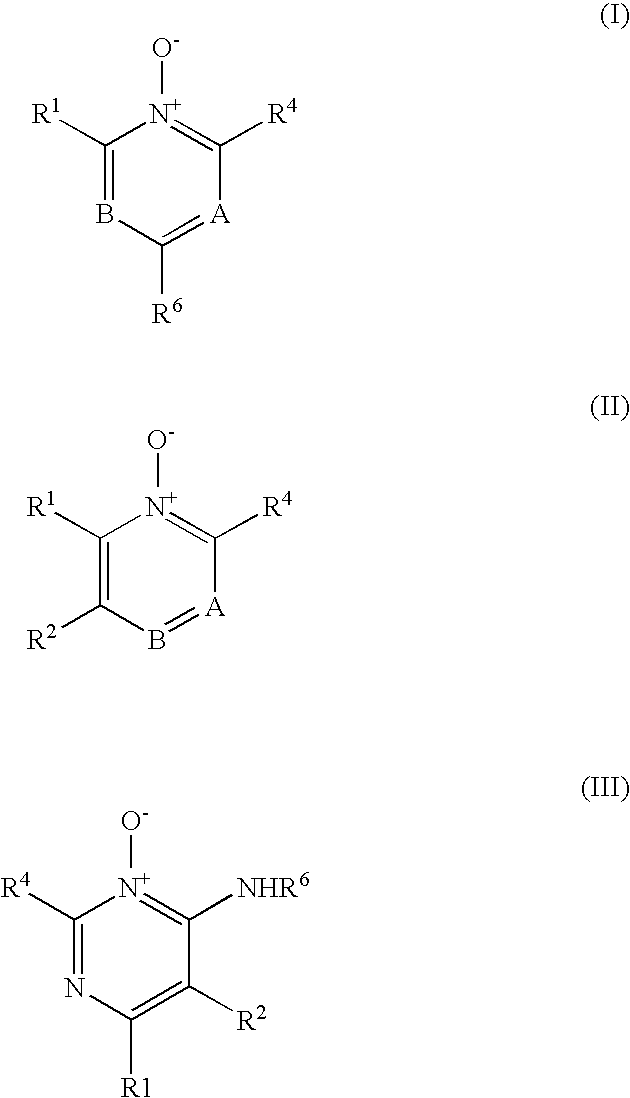Heterocyclic N-Oxides as Hypoxic Selective Protein Kinase Inhibitors
a selective protein kinase and heterocyclic noxide technology, applied in the field of heterocyclic noxide, can solve the problems of non-hypoxic cell toxicity, undesirable side effects, and cell death by apoptosis or programmed cell death, and achieve the effect of modulating or inhibiting activity, reducing oxidative damage to surrounding dna, and reducing the number o
- Summary
- Abstract
- Description
- Claims
- Application Information
AI Technical Summary
Benefits of technology
Problems solved by technology
Method used
Image
Examples
example 1
[0088]
[0089]Examples of current kinase inhibitors with this scaffold includee:
[0090]Methods for the preparation of these compounds can be found in patent documents WO9630347 and WO9633980, the disclosures of which are incorporated herein by reference. The following scheme represents the basic synthetic protocol:
[0091]The preparation of analogous N-oxide derivatives would be carried following the protocol in patent document GB2189238 (using mCPBA for the oxidation of quinazoline derivatives to quinazoline-1-oxides). Alternatives to the use of MCPBA may be H2O2 (as exemplified by the oxidation of quinazolinones as disclosed in U.S. Pat. No. 4,377,408) or CF3CO2H as exemplified in JMC 2003, 46, 169-182. Two routes are possible as outlined below.
[0092]Exemplary compounds of formula II(c) include:
[0093]Synthesis:
[0094]P1 & P2: Protocol described in JMC 2002, 45, 3772-3793 (scheme 2).
[0095]P4 & 5: Protocol described in patent document WO2005105761 (scheme 3).
[0096]P3: P...
example 2
[0097]
[0098]Exemplary compounds include:
[0099]Synthesis
[0100]Q2-P1: Step A—Journal of the Chemical Society, Perkin Transactions 1: Organic and Bio-Organic Chemistry 1973, (22), 2707-13. For the synthesis of the Boc-Amino fragment see: patent document WO03101444 (Scheme 5).
[0101]Q2-P2: The preparation of 1-Oxy-pyrazin-2-ylamine is described in Khimiya Geterotsiklicheskikh Soedinenii, 1968, 4(4), 725-8 (scheme 6). The amine would subsequently be used as described in scheme 5, above.
example 3
[0102]
[0103]Examples of current kinase inhibitors with this scaffold include:
[0104]Preparation: Generic method for the preparation of parent compounds can be found in patent document WO2005070890, J. Med. Chem. 2003, 46, 49-63 and J. Med. Chem. 2005, 48, 1107-1131.
[0105]Exemplary compounds of formula II(d) include:
[0106]Synthesis
[0107]Q3-P1: Protocol based on the prior art publications detailed above (scheme 7)
[0108]Q3-P2 (also feasible for Q3-P2, scheme 8)
PUM
| Property | Measurement | Unit |
|---|---|---|
| one electron reduction potential | aaaaa | aaaaa |
| one electron reduction potential | aaaaa | aaaaa |
| one electron reduction potential | aaaaa | aaaaa |
Abstract
Description
Claims
Application Information
 Login to View More
Login to View More - R&D
- Intellectual Property
- Life Sciences
- Materials
- Tech Scout
- Unparalleled Data Quality
- Higher Quality Content
- 60% Fewer Hallucinations
Browse by: Latest US Patents, China's latest patents, Technical Efficacy Thesaurus, Application Domain, Technology Topic, Popular Technical Reports.
© 2025 PatSnap. All rights reserved.Legal|Privacy policy|Modern Slavery Act Transparency Statement|Sitemap|About US| Contact US: help@patsnap.com



